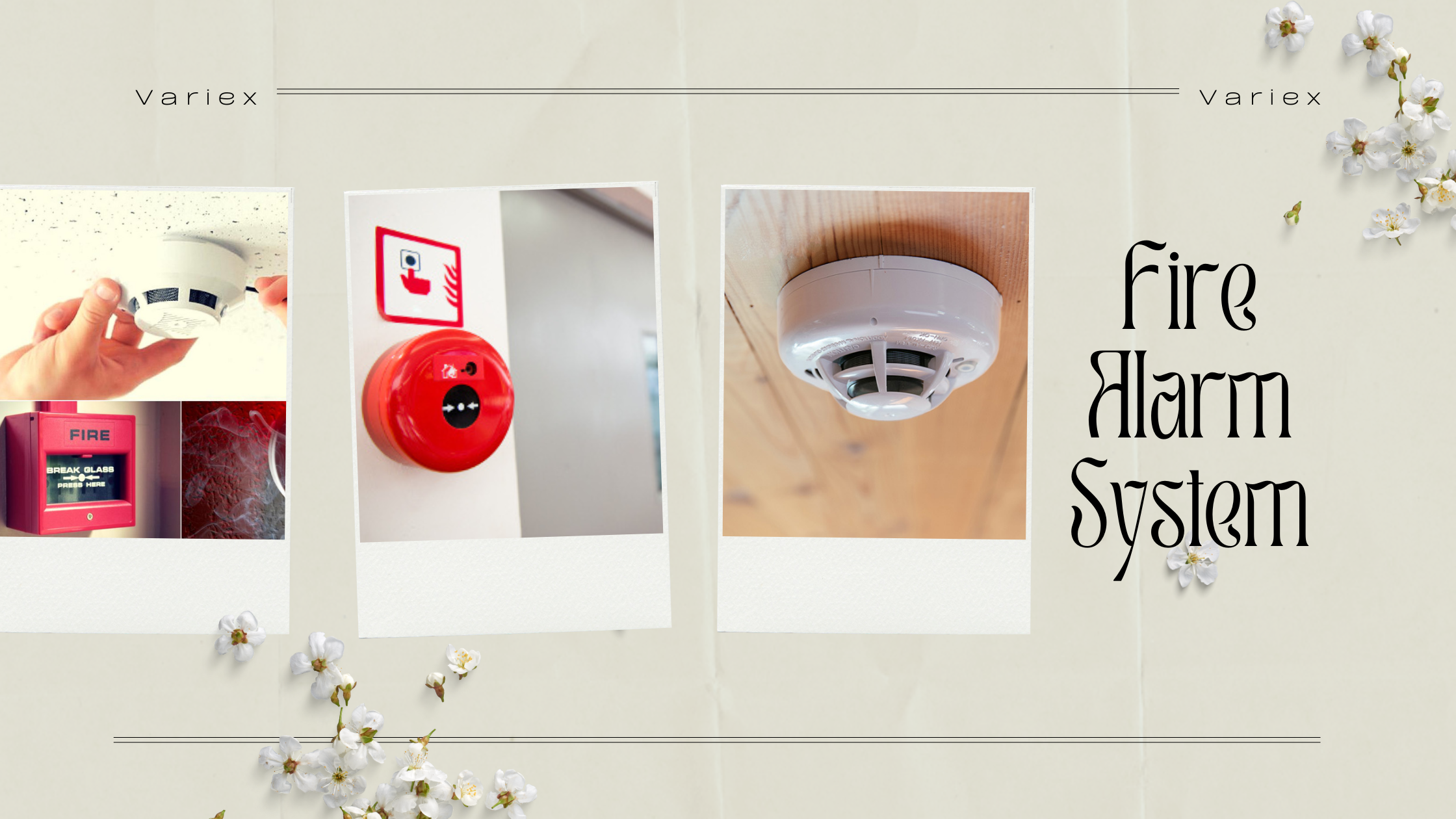![]()
Fire Immuniser
+91-7829629111
Email: info@variex.in
Varistor Technologies Pvt. Ltd.
Block-1, First Floor, Ardente Office One, Hoodi Circle, ITPL Main Road, Bengaluru, Karnataka 560048, IN
How Fire Alarm System
How Fire Alarm System
Fire incidents, despite being perceived as rare occurrences, can lead to destructive outcomes both in terms of property damage and loss of life. Therefore, fire safety should be a paramount concern in every building, be it residential or commercial. One essential component of any building's fire safety strategy is a fire alarm system. Designed to detect the presence of fire by monitoring environmental changes associated with combustion, fire alarm systems are life-saving devices that provide the critical early warning necessary for safe evacuation. But how exactly do these systems work? This article delves into the intricacies of a fire alarm system, its components, types, and function, removing the shroud of mystery around this life-saving technology.
Basic Components of a Fire Alarm System
Regardless of their complexity, all fire alarm systems share some fundamental components. Firstly, they consist of initiation devices such as heat detectors, smoke detectors, and manual pull stations that trigger the alarm system. Secondly, they possess notification devices like bells, horns, and strobe lights that alert individuals in the building of a possible fire. Other components include the fire alarm control panel, power supplies and wiring, and alarm indicating devices.
Fire Alarm Control Panel
Often referred to as the 'brain' of the system, the Fire Alarm Control Panel (FACP) is the component that receives information from detectors, initiates the alarm, and communicates data to a central station. It is responsible for observing and managing all circuits and components connected to the system, ensuring they are functioning correctly. If a malfunction occurs, the FACP can identify the location of the fault and assist in swift repairs.
Initiation Devices
Fire alarm systems leverage different types of initiating devices, depending on their design and purpose. These detectors can sense smoke, heat, or manually trigger the alarm. Smoke detectors, arguably the most common device, detect particles produced by fire and trigger the system when smoke concentration surpasses a certain level. Heat detectors react to a rapid increase in temperature or when the ambient temperature exceeds a predetermined threshold. Manual pull stations, on the other hand, require human intervention to activate the system during a fire.
Notification Devices
Once the fire alarm system has been triggered, it is the role of notification devices to alert individuals in the building. Audio alarms such as bells, horns, and voice evacuation messages are frequently used for this purpose. In addition to these, systems also utilize visual indications like flashing strobe lights, particularly helpful in noisy environments or for individuals with hearing impairments.
Power Supplies and Wiring
Powering a fire alarm system is a critical task. These systems mainly operate on a building's electrical power but also include a backup power supply, usually a battery, in case of power failure. The wiring for fire alarm systems must comply with specific standards to ensure the durability and reliability of the system. The wires connect every device and component in the system, allowing for communication and information transfer among them.
Types of Fire Alarm Systems
There are two main types of fire alarm systems, conventional and addressable systems. Conventional fire alarm systems are more economical and simpler. They divide a building into multiple zones, and within each zone, devices are wire-connected in a series. Addressable fire alarm systems, however, are more advanced. Each device in this system has a unique address, allowing the FACP to pin-point the exact device that initiated the alarm. This precision makes addressable systems preferable for larger buildings.
Importance of Maintenance
Like any other safety equipment, regular maintenance is crucial for a fire alarm system. This activity ensures that all components are in working condition and ready to respond in a fire emergency. Regular assessments must be scheduled according to the system manufacturer's instructions or the local fire prevention code. Maintenance can include cleaning detectors, testing backup batteries, checking control panel functions, and more.
Conclusion
Fire alarm systems play an indispensable role in safeguarding lives and properties from fire risks. By understanding how these systems operate, persons can better appreciate the value they offer and the need for their regular maintenance. Fires are unpredictable, but with a correctly functioning fire alarm system, early detection and safe evacuation become possible, drastically reducing the potential damage that can result. Investing in a robust fire alarm system, therefore, is not just about following safety regulations, but also about prioritizing safety and well-being.
Final Say
At VariEx.in and VariexOnline.com, we specialize in supplying and installing top-quality fire fighting systems and equipment. From fire extinguishers to advanced suppression systems, we offer comprehensive solutions tailored to your needs. Our experienced team ensures precise installation and maintenance for optimal safety.
Trust VariEx for reliable fire protection. Contact us online or call 7829629111 to learn more.
"WHAT YOU CAN READ NEXT"
 Read more +24 November 2023 in Fire Extinguisher
Read more +24 November 2023 in Fire ExtinguisherWhat types of fire extinguishers are available for different fire classes?
 Read more +18 April 2025 in Fire Suppression
Read more +18 April 2025 in Fire Suppression






